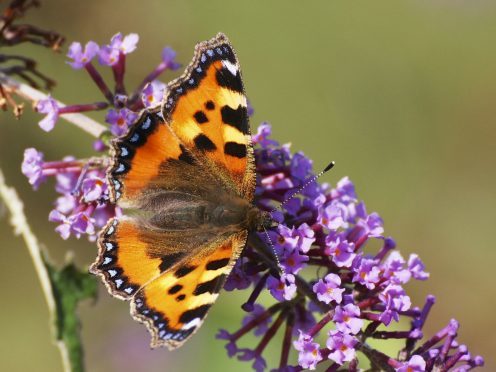Few things freak me out more than sudden, unexpected noises in my home, especially when I’m home alone.
Two weeks ago there was a peculiar sound upstairs, like paper flapping in a breeze. I went to investigate in that silly way you do when you have only your imagination for company – moving with purpose because you desperately want to know what it is, but at the same time slowing down to a comedy crawl in case it’s something scary that might want to eat you.
Sure, you’re a middle-aged man now, a man who camps on mountaintops all by himself. But when there’s something weird upstairs you’re instantly five years old again, listening to the boiler gurgling loudly in the bathroom cupboard, convincing yourself it’s a troll burping.
One slow comedy crawl later and there, on the windowsill, was a small tortoiseshell butterfly. Its frenzied desperation to escape towards the sunlight prompted inevitable comparisons. This current lockdown isn’t nearly as restrictive as the first one was for getting outside but, even so, we’re all butterflies at our respective windows.
“I know how you feel,” I said aloud.
Sympathetic as I am, I wasn’t about to release this butterfly from its lockdown. This time of year there’s precious little warmth from the sun to power its flight, and even if there was, there are no nectar-rich plants to feed on. It would surely perish. So why was it even there?
Doubtless we all remember the ‘egg-caterpillar-chrysalis-butterfly’ science lesson from school, but look more closely and butterflies are surprisingly varied in their winter strategies.
More than half of the UK’s 59 species overwinter as caterpillars, albeit dormant in the undergrowth. About a dozen do so in a chrysalis, around 10 do so as eggs, and five hibernate as adult butterflies in cool, sheltered hideaways. The strategy each species employs is largely determined by when its main food plant will be available as food for its caterpillars.
Small tortoiseshell butterflies lay their eggs on fresh nettles in the spring, so overwintering as adults means they’re ready to mate as soon as they’re stirred by warmer weather.
I’ve no idea where, in my house, would have been cold enough for this butterfly to have remained inactive and gone unnoticed since autumn. But something (probably the central heating) had awoken it from its slumber and it was now wasting precious energy butting my window.
The best thing you can do in this situation is put the butterfly somewhere that will remain reliably cold and dark until the spring. You might wonder what the point is in trying to help, but small tortoiseshells are in trouble. The UK population crashed by 73% between 1976 and 2015, so lending a helping hand is so much more than just a small act of kindness.
I gently coaxed my butterfly into a small box and first put it in the fridge (not the freezer!) for half an hour, just to calm it down. My other half was less than thrilled. He knows me all too well and quickly envisaged a small colony of rescued butterflies slumbering in the salad drawer for the next two months.
I then spent 20 minutes looking for a suitable hibernation spot outside – somewhere cool and dark but not exposed, where it could slumber unnoticed. A small cavity inside a stone brick, on the interior wall of the barn, looked perfect.
Holding the box upside down in the cavity, I tapped firmly until the butterfly reluctantly fell out. Wings open, it sluggishly crawled around its cool new environment before settling, upside down, on the ceiling of the cavity. I waited a few minutes and watched as its wings very slowly closed, and then left it be.
I’ve checked on my wee guest regularly since then, and two weeks later it’s still hanging there motionless, wings closed, waiting for better times. It’s occasionally been subzero since then but that shouldn’t be a problem. Butterflies, and indeed many other insects, are able to reduce the amount of water in their bodies and replace it by secreting natural antifreezes, such as glycerol.
I quite envy it actually. Much as I love winter I can’t help wondering if it has the right idea, given what’s going on – just curling up and slumbering through hard times in anticipation of a brighter future. Coming to think of it, there’s an old lime kiln nearby, whose dark arches are more like caves. Hmm, where did I put my sleeping bag?
Ben Dolphin is an outdoors enthusiast, countryside ranger and former president of Ramblers Scotland
